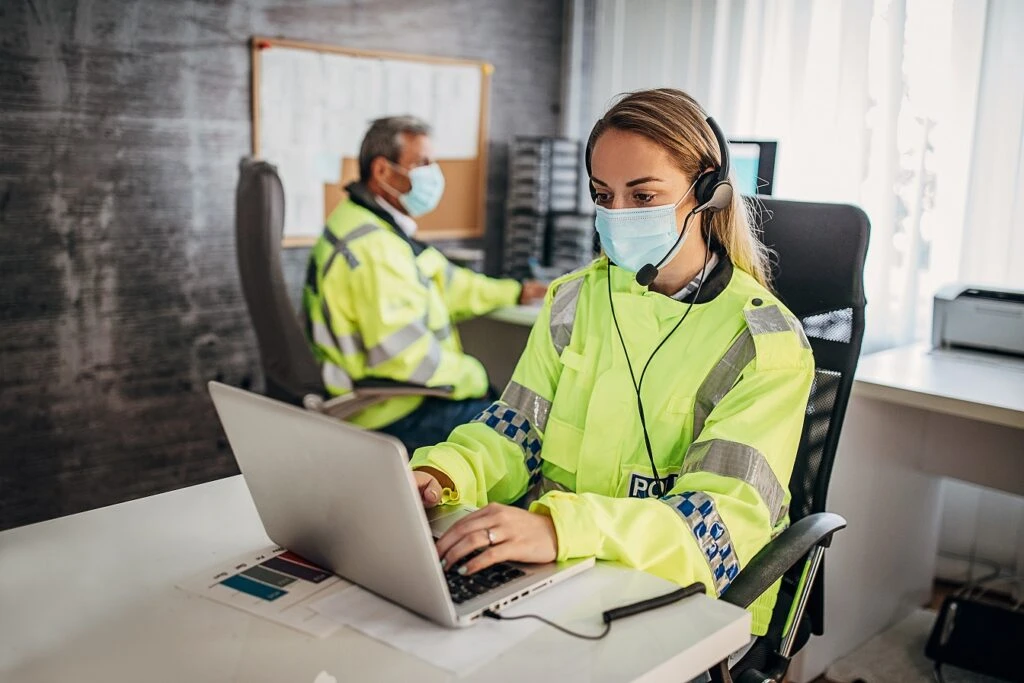
Driving digital transformation on the frontline
Creating safer communities is a universal goal, one that often sees the level of risk to our frontline offset by the situational awareness that they rely upon from their command center. But what happens when that support structure is not available?
With technology playing a greater role for frontline agencies, it is imperative that these organizations are equipped and connected with the tools they need to keep both themselves and the community safe while maintaining transparency with the public. In a sector that has traditionally been risk-averse and sometimes a late adopter of technology, advancements around cloud services, diverse and reliable communication networks, data and analytics, AI and IoT are all helping to foster innovation.
The pandemic has created unforeseen challenges for public safety and justice agencies, driving them to prioritize and accelerate digital transformation so their staff can work remotely while staying secure to continue everyday operations. As they embrace these new technologies, departments are also uncovering new capabilities, efficiencies and cost savings. This new way of operating – although born out of necessity – is proving to be an effective way of serving people and communities.
Evolving frontline emergency response
At Microsoft, it is our mission to empower every person and every organization on the planet to achieve more, which includes working with agencies worldwide to align technology to the drivers of change in public safety and justice.
Agencies are leveraging Microsoft Azure’s data analytics and cloud technology to enable modern emergency-response and proactive crime reduction systems. Using cloud-based analytics, workers can automate and optimize procedures for increased efficiency and situational awareness to analyze, recognize and appraise risk more effectively. This can help law enforcement officials identify emerging trends, help fire services deploy equipment dynamically and allow emergency medical personnel to be more responsive.
A vast, global ecosystem of partners
While all these technologies ensure our frontline is equipped with the tools that they need to create safer communities, we need to also ensure agencies have the connectivity they need – no matter where they are located – to fully take advantage of these toolsets. At Microsoft, we fuel a powerful ecosystem of partners that understand the unique needs of the frontline.
One of these partners is Dejero, a company with over 140 employees based in Waterloo, Ontario that aggregates diverse connectivity paths to deliver enhanced reliability, expanded coverage and greater bandwidth using cloud-based technology. When it comes to public safety, Dejero leverages Microsoft Azure to deliver mission critical connectivity for first responders. When responding to a scenario in harsh or remote environments, there are often connectivity challenges, including network coverage gaps, compromised or damaged cellular infrastructure or network congestion. Dejero Smart Blending Technology addresses these hurdles by blending any and all available network connections – including 3G/4G/5G and satellite – to create a single virtual “network of networks” optimized for speed and reliability.
Another Microsoft partner, Hitachi Solutions worked with the Barrie Police Service in Ontario to develop the Officer Reporting application. Built with Microsoft Power Apps, the solution is designed to replace obsolete tools while enhancing functionality, improving efficiency in operations and supporting agile growth when developing a police report.
Empowering cross agency collaboration
We’re also empowering the frontline with Microsoft Teams for cross-agency collaboration. With Teams, agencies are reducing the risk of infection for users by sharing data, services and innovation across jurisdictions ultimately enabling frontline workers to operate more efficiently and provide more effective citizen service. When agencies share crime, fire, or other incident data, they collectively build data models that apply to community and geographical risks in turn reducing the cost and effort of large-scale data matching and reactive resource allocation.
This data can also help determine where to increase staffing, develop richer community engagement and pre-position safety equipment. Leveraging Teams has also provided greater mobility with workers able to attend meetings from home or in the field and has digitized paper-based processes – like changing shifts or filing activity reports – so workers can focus on more high-impact tasks.
With public safety organizations worldwide prioritizing the digital enablement of their teams, it is imperative to build technology support structures that ensure consistent and resilient communications between command and frontline.
For more on how Microsoft is enabling digital transformation on the frontline, download this e-book on the future of public safety and justice: Future of Public Safety and Justice | Microsoft




